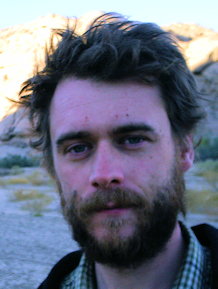Thomas Sloan
PhD Student
Profile
Biography
Tom is a PhD student working on afforested peatlands in the Flow Country of Scotland. Tom has several years of technical experience in environmental, climate and agricultural research in the UK and abroad. This has included spells at Imperial College London working on closed system modelling of climate change, at FERA surveying British mammal populations and studying legume crops with the Processors and Growers Research Organisation. Most recently, Tom has been a part of the Peatlands ESUK project at the University of York, examining the effect of management strategies on upland ecosystem services.
Tom’s PhD aims to use tephra-chronology to quantify the changes in carbon storage in afforested peatlands. The project will also quantify carbon storage in tree stocks to give a complete carbon budget for planted and unplanted areas. Full details are available on the Quantifying carbon accumulation and loss in afforested peatlands project website.
Career
|
2016 - present |
PhD student |
Department of Environment and Geography, University of York |
|
2012 - 2016 |
Research Technician |
Department of Environment and Geography, University of York |
|
2011 – 2012 |
Assistant Technical Officer |
Processors and Growers Research Organisation |
|
2010 |
Field Assistant |
Institute of Zoology, Zoological Society of London |
|
2007 – 2010 |
Ecotron Research Technician |
Silwood Park, Imperial College London |
|
2006 – 2007 |
Field Assistant |
FERA (then Central Science Laboratory) |
|
2002 – 2006 |
Undergraduate |
Biology Department, University of York |
Research
Overview
Description of PhD
Title: Quantifying carbon accumulation and loss in afforested peatlands
Supervisors: Professor Roland Gehrels (University of York), Dr Roxane Andersen (University of Highlands and Islands), Russell Anderson (Forestry Commission), Dr Dmitri Mauquoy (University of Aberdeen)
Funding: Leverhulme Trust
Description of thesis
Over the course of the Holocene the development of peatlands has led to the storage of up to 600 Gt carbon globally. There is a growing recognition that these deposits are of international importance, and must be understood and conserved. This was not always so. The Flow Country of northern Scotland is one of the largest blanket bogs in the world. During the late 20th Century the development of new planting techniques combined with tax incentives to encourage forestry across large areas peatland.
The effects of this planting are poorly understood. As many of the stands reach harvesting age, the question arises of whether the bogs should be restored. To address this it is of critical importance to quantify the loss of carbon from the peat, and evaluate it against the accumulation of carbon in trees.
Tephrochronology can be an important tool as part of a stock-based approach to quantify carbon in such systems. Peat deposits in the Flow Country are known to contain several layers cryptotephra originating from eruptions in Iceland (most notably Hekla 4). Recently developed core scanning techniques using x-ray fluorescence and x-radiography allow for rapid identification of these layers. The tephra may then be used to delineate isochrones in the peat, allowing for comparison between cores from forested stands and unplanted bog.
This interdisciplinary project uses paleoenvironmental techniques to answer current conservation questions. It will also provide one of the most complete records of tephra in the north of Scotland.
Publications
Selected publications
Lukac, M., Milcu, A., Wildman, D., Anderson, R., Sloan, T., Ineson, P. (2011) Non-intrusive monitoring of atmospheric CO2 in analogue models of terrestrial carbon cycle. Methods in Ecology and Evolution 2: 103-109

